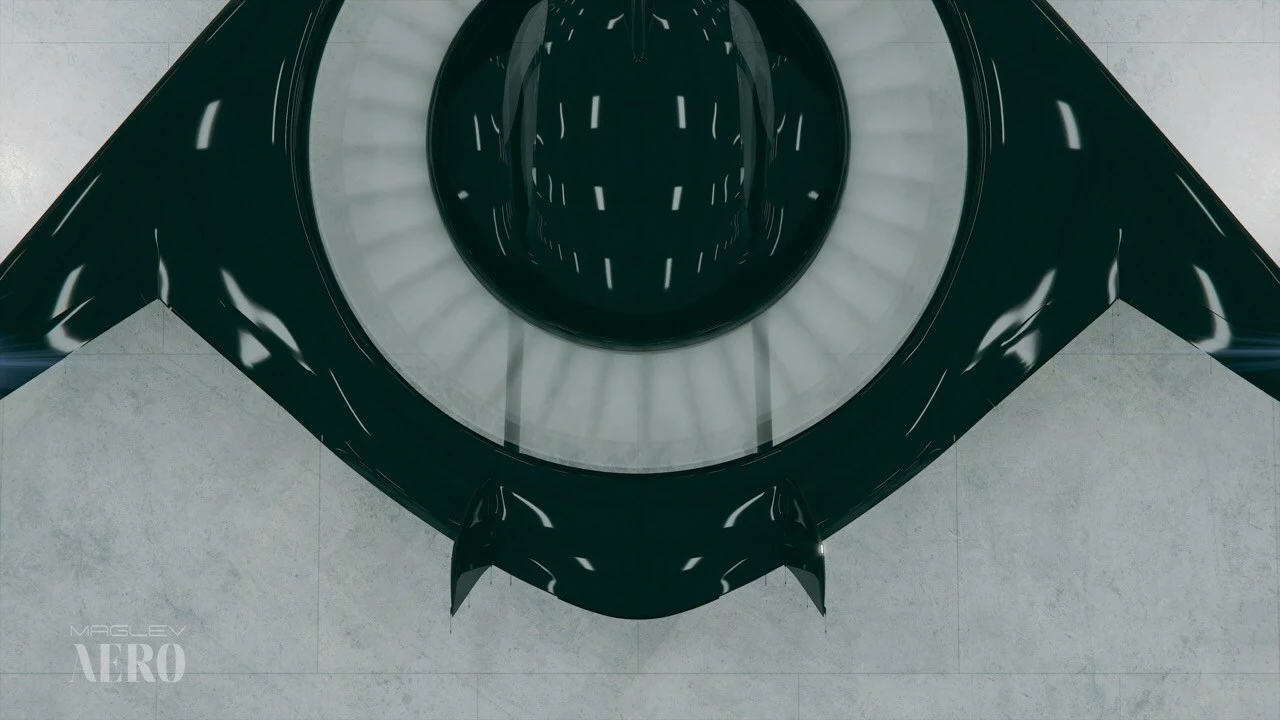A fascinating eVTOL project is about to come out of stealth, showcasing a "breakthrough HyperDrive propulsion technology" that MagLev Aero claims is "dramatically more quiet, efficient, safe, sustainable and emotionally appealing to the mass market."
Representatives from the Boston-based company have made their way to the Paris Air Show, where they're preparing to reveal a very different approach to electric vertical lift aircraft, drawing on the magnetic levitation technology used in high-speed trains.
What we appear to have here is an annular lift fan arrangement. The aircraft's cabin appears to be surrounded by a huge ring-shaped duct, into which at least one large-diameter, many-bladed fan is mounted.
This circular rotor is kept frictionlessly separated from its enclosure using permanent magnets, so it's free to spin when driven. It's driven by a series of distributed, redundant electromagnetic propulsors around the rim.
The benefits here are clear: big fans with low disc loading are highly efficient, and can generate useful levels of lift at relatively low speeds. This will help keep the noise down, particularly since they're surrounded by ducts, and should stretch the hover time available from a battery compared to a smaller-fan design.
Without having yet seen the presentation, we may as well now wander off into the realm of wild speculation.
I'd be surprised if it's just a single annular fan; it seems more likely to me that there are two in there, set to counter-rotate. That'd give it a healthy dollop of additional thrust, some vertical lift redundancy, and the ability to control yaw using inertia.
MagLev Aero says this thing will be capable of efficient, high-speed cruise. So there's going to be some horizontal thrusters somewhere on this thing as well as the lift fan.
There's some thorny aerodynamic issues here; a similar-looking concept was examined by Northwestern Polytechnical University researchers Y. Jiang and B. Zhang in 2015, and they proposed the idea of closing the lift ring off with top and bottom shutters to enable smooth cruise flight with minimal drag.
The transition, however, is going to be a problem. The lift fans apparently create enormous drag in forward motion, as well as a nose-up pitching tendency. Indeed, Jiang and Zhang later proposed a flight transition strategy in which the aircraft would rise up to a high hover on the annular fan, then start up the forward propulsion while dropping down in a glide, until the shutters are closed, the thing's up to speed, and it's ready to fly on the wing alone.
It probably wouldn't be that hairy of a move from inside the cabin, but it certainly seems like it might eat up a bit of whatever energy was saved in the efficiency of the fan.
"I'm thrilled to reveal the breakthrough propulsion technology we have been working so diligently and passionately on for the past few years in stealth," said Ian Randall, co-founder and CEO of MagLev Aero, in a press release.
"The eVTOL industry has achieved many important milestones in the pursuit of urban air mobility,"said Rod Randall, MagLev Aero's co-founder and chairman. "MagLev Aero's breakthrough technology is poised to extend these successes with a ground-up designed electric propulsion platform that is purpose-built for ultra-low noise in vertical takeoff and landing, as well as cruise, and will allow industrial design that provides for a compelling user experience. We believe our HyperDriveTM innovation applies to a variety of sizes, configurations and use cases, and we look forward to working with OEMs and other partners to bring our technology to market."
We look forward to learning more!
Source: MagLev Aero





